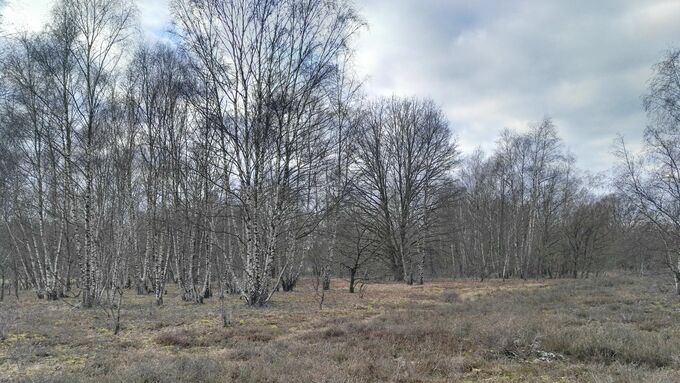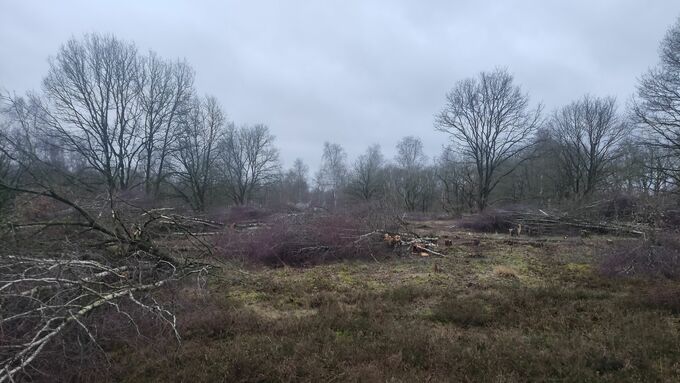Overgrown habitat type areas before the start of the works © Lena Koslowski
download picturemain content
Project of the month
#5/2022 SAC ‘SANDTROCKENRASEN ACHIM’ (DISTRICT OF VERDEN)
Restoration and expansion of habitat types 2310 and 2330
The nature reserve ‘Sandtrockenrasen Achim’ (NSG LÜ 211), like the SAC of the same name, covers an area of about 58 hectares and is located in the settlement area of the town of Achim. It is an inland dune range that runs along the edge between the floodplain and the Geest. The elongated dune area with dunes which were once more than 20 metres high was quarried to an average height of eight to ten metres during the World Wars and in the following years for building sand extraction. What remained was a flat, dry area of lean dune sand with almost flat areas and only small hills. As a result, the natural conditions of a high, moving dune no longer exist and the habitats are now threatened by increasing scrub encroachment. Without counteraction, the open sand habitats, which are important for numerous insect species, would disappear completely. They not only find feeding habitats here, but also use the loose sandy soil to create breeding tubes for reproduction. The most important insects are endangered Hymenoptera from the sub-order Aculeata, such as spider wasps (Pompilidae), Cuckoo wasps (Chrysididae), sphecoid wasps (Spheciformes), bees (Apiformes) and ants (Formicidae), as well as tiger beetles (Cicindelidae), butterflies and Orthoptera, such as the highly endangered blue-winged grasshopper (Oedipoda caerulescens).
The habitat types "Dry sand heaths with Calluna and Genista" (2310) and "Inland dunes with open Corynephorus and Agrostis grasslands" (2330) are among the most endangered ones in Lower Saxony. In the area of the protected area ‘Sandtrockenrasen Achim’, there are good conditions for the long-term conservation of both habitat types. The area is already regularly grazed. Most of the land in the nature reserve is privately owned and only a small part is publicly owned. Fortunately, some owners have given their consent to the planned nature conservation measures.
Thus, at the beginning of 2022, the Lower Nature Conservation Authority of the district of Verden and the NLWKN began restoring around 1.7 hectares of the habitat types 2310 and 2330 present in the area as part of the Integrated LIFE Project Atlantic Region DE. The Lower Nature Conservation Authority took over the intensive local construction supervision.
In the first step, the areas of the measure were marked in the terrain. Then a contracted company removed the woody plants. In the process, the stumps were removed from the ground with a grab rake and the topsoil was worked with a mulcher. The company stored some of the stumps at suitable places along the edges of the nature reserve. They serve as shelter for reptiles such as the sand lizard. The sandy soil was then exposed again by so-called ploughing; the topsoil was removed to an average thickness of 15 centimetres. The humus-rich material is now stored at the edge of a nearby field and will be spread on it in the course of the year.
One difficulty was the implementation of the action on a partial area where explosive ordnance had been suspected. A preliminary exploration for explosive ordnance revealed several fragments of projectiles. The Lower Nature Conservation Authority and the NLWKN therefore decided not to use the topsoil for application on the field due to the unclear historical previous use, but to leave it in place. This area should presumably be handled with heath cuttings from a donor area in the near future in order to prevent unwanted woody growth.





